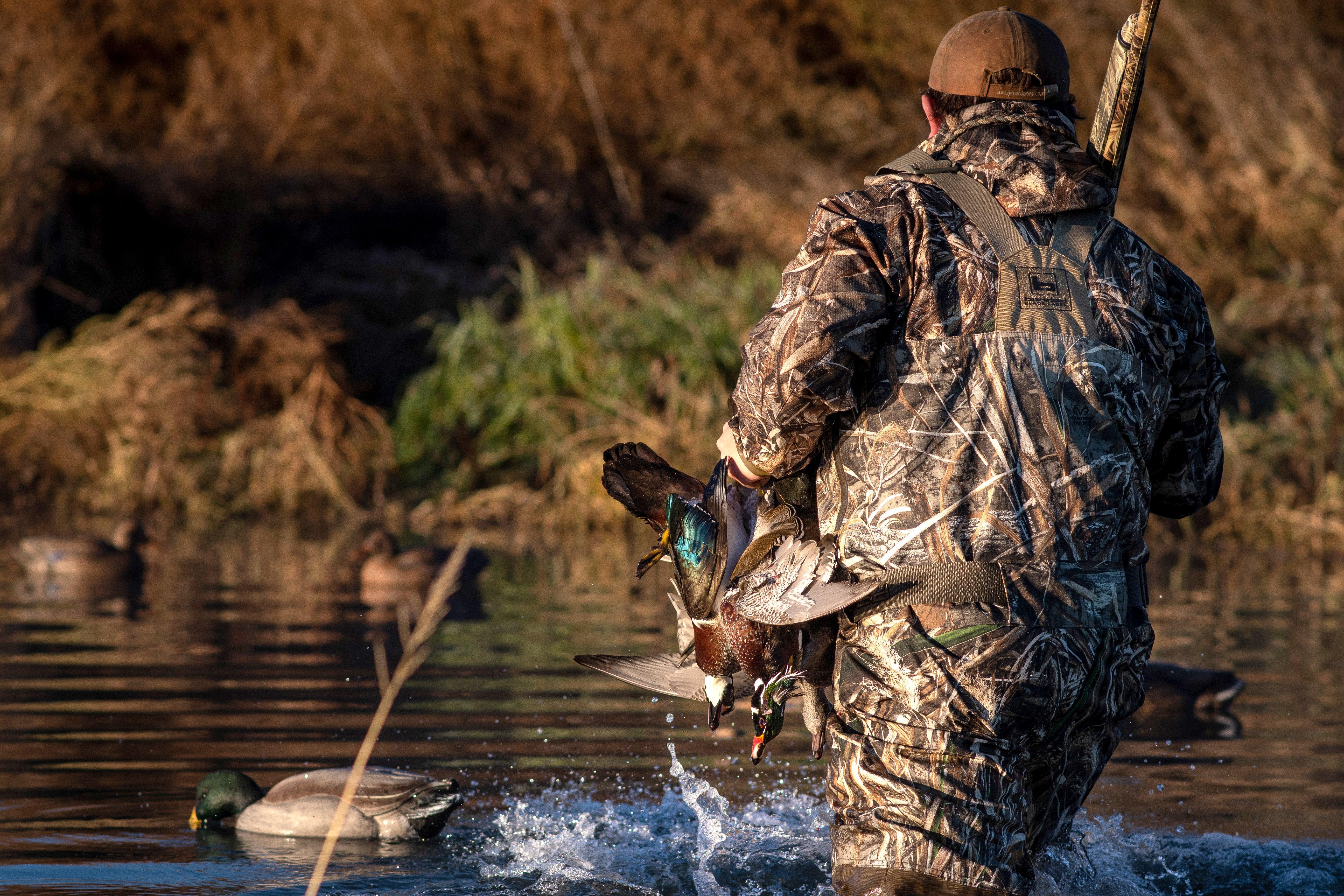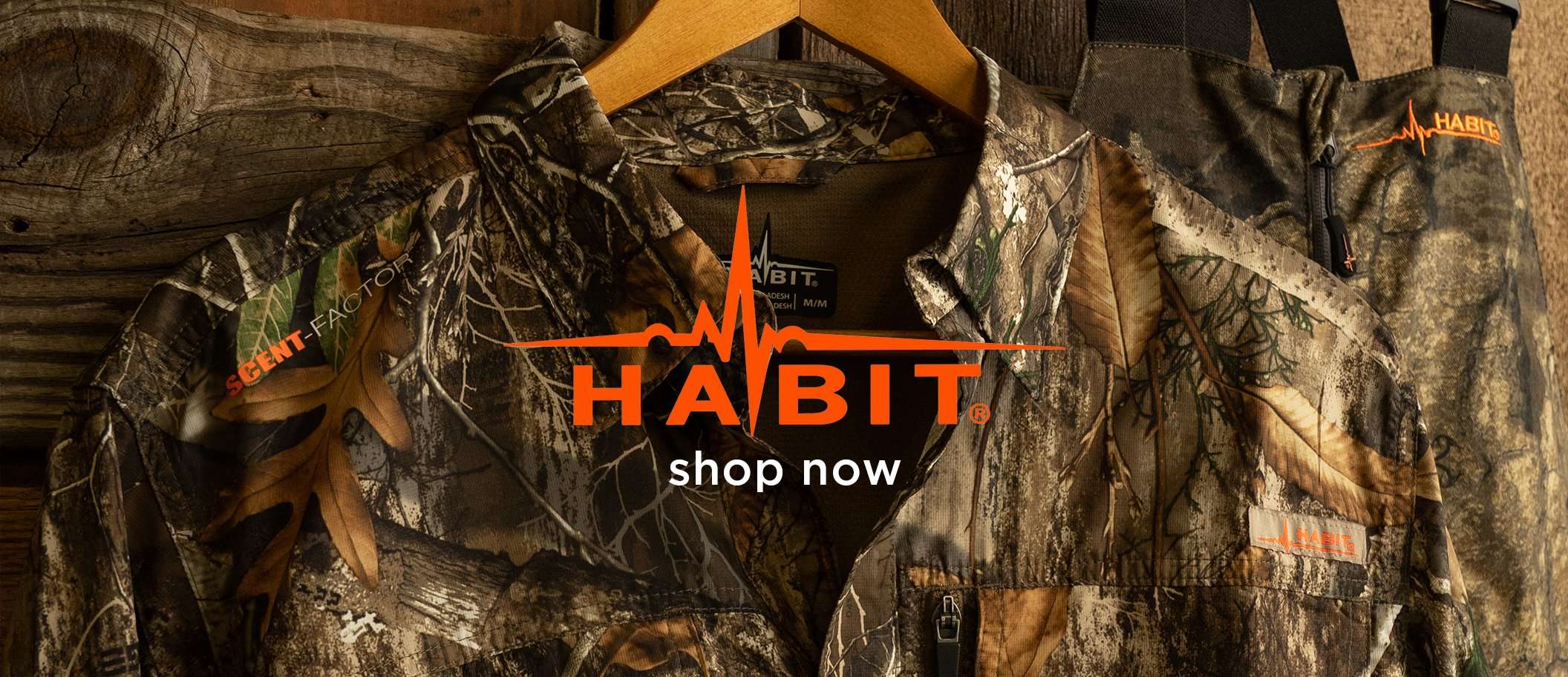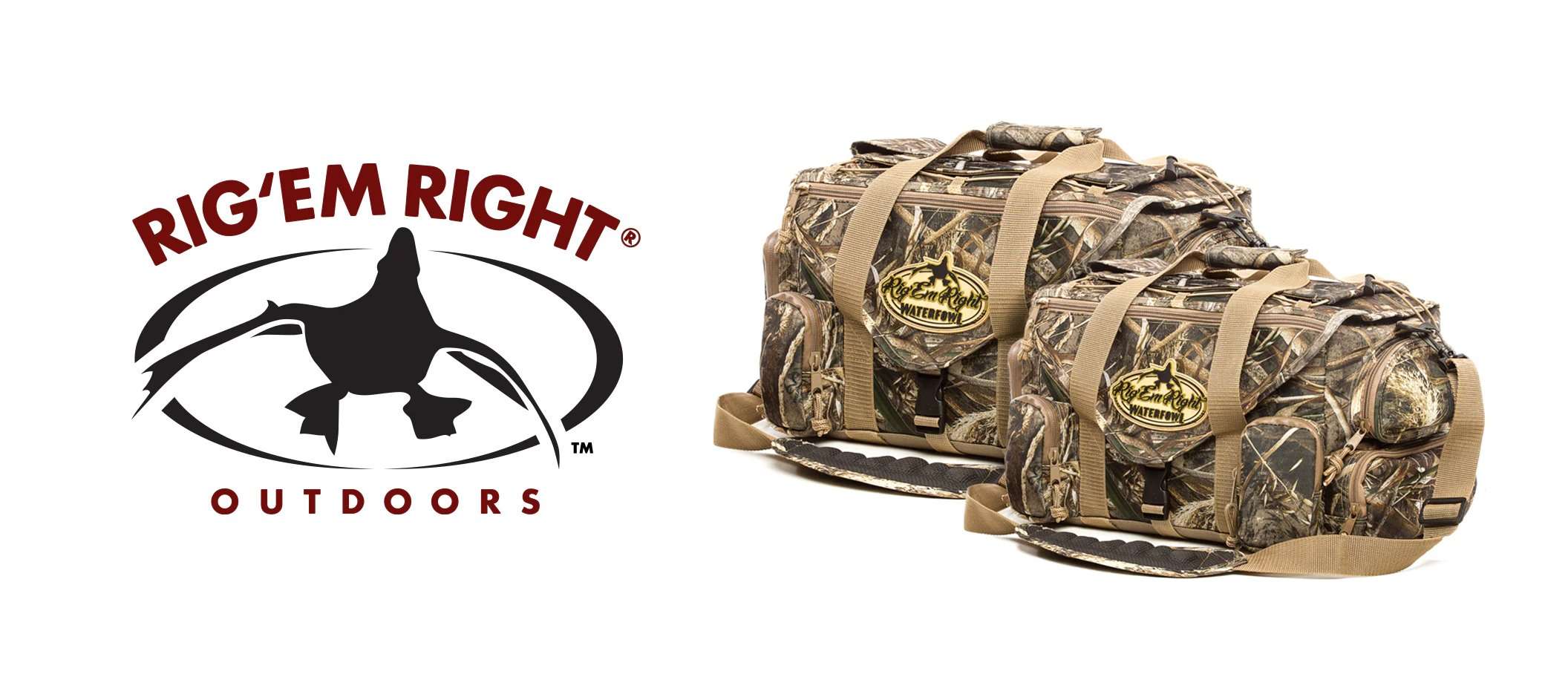Pro duck hunters must be careful about blowing birds out of an area, but they still hunt water. Here are their favorite setups

Sloughs or other areas where ducks feed and loaf provide great water hunting opportunities. Photo by Forrest Carpenter
Dry-field duck and goose hunts get a lot of press nowadays, and it’s easy to see why. You can work loads of birds, and you’re not blowing up a roost.
But waterfowl relate to water, after all, and sometimes you just need to don waders and throw out floating decoys. No one’s suggesting that you should bust a roost. But you can experience plenty of great water hunts without disturbing the bedroom. The duck pros know. Here are some of their favorite water strategies.
SMALL TRAFFIC
Tony Vandemore, owner of Habitat Flats near Sumner, Missouri, loves running traffic at a small timber slough between a refuge and a feeding area.
“The place I hunt, you won’t ever see a duck on it, but there are a lot going over it,” he said. “Decoys, loud calling and bringing ducks into a place they don’t want to be is a really fun hunt to me. With traffic, it’s all about being on a good line and having a lot of birds over you. You aren’t going to stop them all, so the more you get over you every day, the better your chances.”
BIG TRAFFIC
Cooper Olmstead, of Habitat Flats, also enjoys running traffic, but on large river systems.
“I absolutely love river hunting and always have,” he said. “Just the unknowns you get thrown day in and day out make every hunt different. And then pairing that with running traffic. You can be super aggressive with lots of calling and big spreads. You are really forcing them to do what you want. That’s what makes it a super special hunt in my eyes.”
Don’t Miss: Is Opening Day of Duck Season Overrated?
THE LONG GAME
Jeremy Dersham, owner of Ridge and River Running Outfitters in southern Wisconsin, guides hunters on the canvasback-rich Pool 9 of the Mississippi River. Pressure on the open water can be heavy, so he’s always trying to find lower-impact spots.
“Some of my favorite locations to scout are loafing and feeding areas,” he said. “I want to know where the birds spend the majority of their time and the routes they use to get there. I’m always trying to think a few steps ahead. That is to say, I want to have a great hunt today but also another great hunt tomorrow. I don’t want to burn a roost if I don’t have to. Rather, I want to concentrate on different flight lines and loafing areas.”
Dersham seeks points, sandbars, tree lines, or any type of structure he can legally hunt as ducks travel from their primary roosts.
“Typically, birds are leaving a roost and looking for food and then loafing areas to spend the day,” he said. “They do not want to burn much energy from point A to B, but once the season opens up, birds start learning the game real fast. They will adjust their flight lines according to the pressure they feel. I want to spend as much time on learning their behavior and adjust to what they are doing. It’s never a given on when more birds are going to show up. Hunt hard today, but plan for tomorrow.”
THE COMFORT ZONE
Graham Greseth, owner of MaXXed Out Guides, which runs hunts in several states, said loafing areas are his favorite water setup.
“For me, the definition of a loaf is a place birds go after they leave their roost to feed,” he said. “So instead of going from the roost to feed and then back to roost, they go roost to feed to loaf. Pasture and farm ponds with lots of grass around them for them to graze on are frequently productive.”
Loaf hunts can be risky, however, unless the conditions are right.
“Typically, a loaf is not going to be good on a cloudy, windy, rainy day,” Greseth said. “Birds are going to be feeding longer in the fields on those days and might skip their loaf where they go to graze. Also, if someone hunts the field that the birds are hitting before they come to the loaf, that can mess with their pattern and send them back to the roost instead of their loaf.”
When loaf hunts work, though, they can be memorable.
“Birds get so comfortable with their loaf,” Greseth said. “When everything aligns and they come back, it’s some of the best hunting you will experience — especially with giant Canadas.”
OPEN WATER
Like Olmstead, Chad Belding, host of The Fowl Life, loves river hunting. But he also enjoys a smaller setup when the weather gets right.
“My second favorite is small farm ponds or gravel pits, like on the Front Range of Colorado, during freeze-up,” he said. “Make an ice hole, saw one, and keep it open during the night. Check state laws to see if you can hunt over an ice-eater.”
Those tiny setups provide an attractive option for late-season birds traveling from a field to a loaf or roost.
“Set sleeper shells and full-bodies all around the ice holes,” Belding said. “The whole shoreline should be just littered with decoys. With ducks, you can add a Mojo. And you can kill them in all parts of the day, because it’s hard for them to say no to that realistic spread when they see that open water.”
Don’t Miss: Skinny Dippers, Crazy Coyotes, and Other Weird Encounters in the Duck Blind












